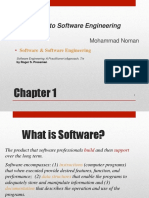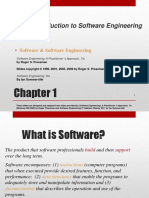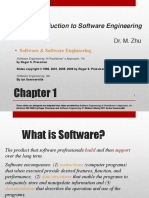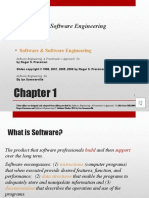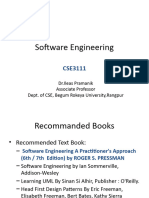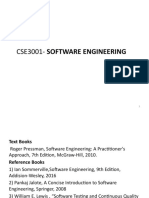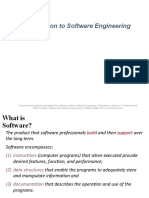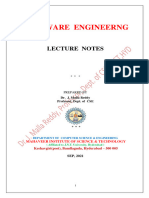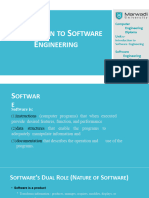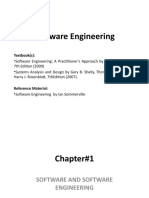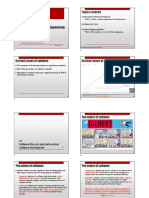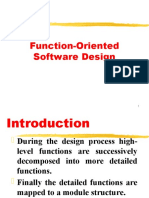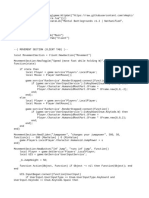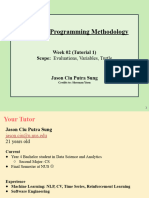0% found this document useful (0 votes)
8 views20 pagesSoftware Engineering - An Introduction
The document discusses the significance of software in modern business, emphasizing that software is a key differentiator in competitive markets, often costing more than the hardware it runs on. It highlights the evolution of software engineering as a discipline to address the challenges of software development, including the 'software crisis' characterized by increased complexity and maintenance difficulties. The document also outlines the essential attributes of good software and the importance of systematic approaches in software engineering to meet business needs effectively.
Uploaded by
kishoremuraliCopyright
© © All Rights Reserved
We take content rights seriously. If you suspect this is your content, claim it here.
Available Formats
Download as PDF, TXT or read online on Scribd
0% found this document useful (0 votes)
8 views20 pagesSoftware Engineering - An Introduction
The document discusses the significance of software in modern business, emphasizing that software is a key differentiator in competitive markets, often costing more than the hardware it runs on. It highlights the evolution of software engineering as a discipline to address the challenges of software development, including the 'software crisis' characterized by increased complexity and maintenance difficulties. The document also outlines the essential attributes of good software and the importance of systematic approaches in software engineering to meet business needs effectively.
Uploaded by
kishoremuraliCopyright
© © All Rights Reserved
We take content rights seriously. If you suspect this is your content, claim it here.
Available Formats
Download as PDF, TXT or read online on Scribd
/ 20






